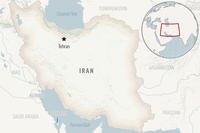 The Air Force deployed four global positioning satellites into space this past year - the most it has put up in a single year in more than three decades.
The Air Force deployed four global positioning satellites into space this past year - the most it has put up in a single year in more than three decades.
But the constellation that helps more than 3 billion worldwide users - military and civilian - get from Point A to Point B also enables the Air Force to carry out another critical mission -- watching for nuclear explosions.
Within each satellite is a secondary payload called the Nuclear Detonation Detection System, Air Force 2nd Lt. Christopher Phillips of the 2nd Special Operations Squadron, Schriever Air Force Base, Colorado, said in a statement released on Dec. 7.
"NDS performs an important mission," he said. "It helps verify the Limited Test Ban Treaty of 1963. It makes sense. The whole reason the GPS constellation has these nuclear detonation sensors is because it provides global coverage. We can see every part of the planet."
The most recent launch occurred on Oct. 29 when the GPS IIF-8 satellite was carried into space aboard an American Atlas V 401 rocket from Cape Canaveral Air Force Station, Florida.
Nearly two years ago, the head of Air Force Space Command said the Pentagon was considering dropping the nuclear sensor payload from the GPS satellites as part of a cost-savings measure. The military would instead pay to have the sensors placed aboard commercial satellites, Reuters reported in January 2012, quoting then Air Force Space Command Commander Gen. William Shelton.
The Air Force said on Sunday there are 38 satellites in the GPS system.
GPS service requires more than 24 operational satellites in order to maintain worldwide coverage around the clock, according to the Air Force. Additional satellites increase GPS performance but are not considered part of the core constellation.








